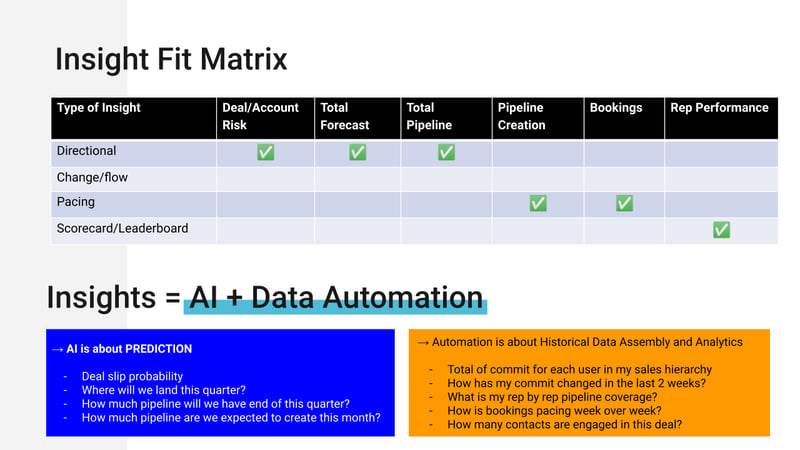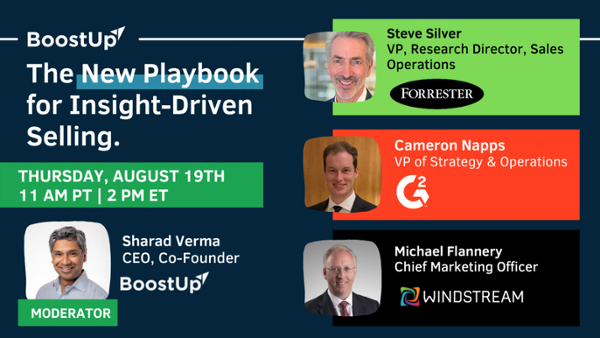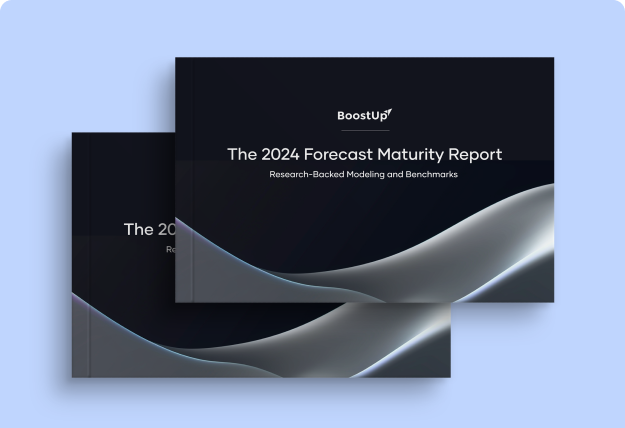The Revenue Blog /
Insight-Driven Sales: Everything You Need to Know
Insight-Driven Sales: Everything You Need to Know

Topics covered in this article
Insight-driven sales promises to be the next big step for B2B organizations. By combining buyer intent data with sales engagement analysis and forecasting, insight-driven sales helps teams engage the right contacts, with the right content, at the right time.
Steve Silver (VP, Research Director, Forrester), Cameron Napps (VP Strategy & Operations, G2), and Mike Flannery (CM & Head of Sales, Windstream) recently joined BoostUp CEO Sharad Verma to discuss insight-driven selling, why we need it, and how it will impact your organization.
What is driving the need for insight-driven selling?
“Our expectations of what happens before, during, and after we make a purchase as a consumer have changed, and we now see those expectations moving into the B2B world,” says Steve Silver.
Today, buyers perform research, reach out to peers, and make decisions before ever involving a salesperson. They spend far more time online, engage with content, draw their own conclusions, and then reach out to the companies they would like to purchase from.
In a recent study, Forrester found that the total number of interactions during the purchase process has dramatically increased, from 17 in 2019 to 27 in 2021. Add to that the fact 60% of purchases now have four or more people involved.
So not only are salespeople engaging later, they are having to perform more interactions with more people.
Insight-driven selling serves to ID the right contacts, and allow a salesperson to engage with them through the right channel, with the right content, at the right time.
What does insight-driven selling do?
Insight-driven selling, “helps us identify what actions and tactics we need to take when we take them, and with whom… It is critical that you know the buyers and deliver content that meets their needs, which requires collaboration across your organization,” says Mike Flannery.
It goes beyond just engagement, however. Steve covers the Insight-Driven Sales System, which empowers the processes, infrastructure, insight, and talent to deliver the best possible results to customers.
Insight-driven sales help teams stay focused on the customer and deliver an exceptional buying experience that is backed by data
What are the impacts of insight-driven selling?
With BoostUp and an insight-driven approach, Windstream has seen 2.7x more contact engagement, a 10% increase in the field sales win rate, and a 15% increase in the inside sales win rate.
Windstream uses BoostUp and their tech stack to not only better engage contacts at the right moment, but to improve their sales process as a whole. They use insights around engagement, opportunity risk, and next steps to forecast more accurately and win more deals.
.png?width=800&name=Q321%20RT-%20The%20New%20Playbook%20for%20Insight-Driven%20Selling.pptx%20(1).png)
How? An aligned sales and marketing process that delivers actionable insights, augmented with active coaching, yields predictable, consistent results.
Your reps want the data.
When it comes to instituting an insight-driven selling process, the truth is your reps want the data. “When you have data, you don’t have to make a claim.” Says Cameron Napps. Reps want to win, and the data provided by an insight-driven strategy provides them with that.
When it comes time to get your reps on board, champion the leaders and highlight how the other reps can get there.
What does the future hold for Insight-Driven Sales?
Cameron and G2 believe that as insight-driven sales advances, the amount of proprietary data collected from sales engagements will allow teams to build their own unique playbooks based on historical sales engagements.
This means teams will be able to create high-performance messaging and use technology to deliver it at the right time, to the right contact
What insights can be gained?
Sharad provides that AI can provide insights around direction (up or down), flow (how are things changing), pacing (week over week), or scorecards (including leading indicators of activity and engagement.)

The data created by insight-driven selling serves to improve forecasting and sales team performance by providing contact engagement data, sentiment analysis, and risk scoring.
To watch the entire roundtable, click the link below.





-Photoroom.png)